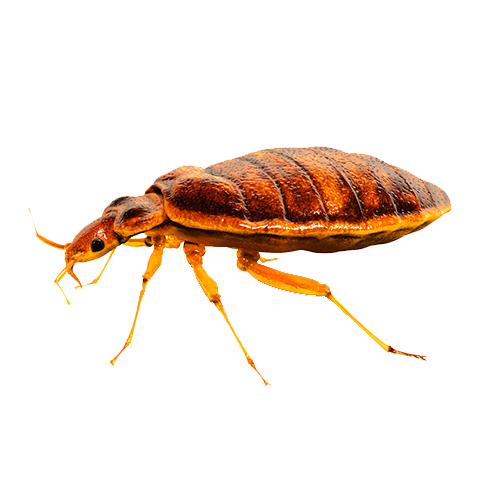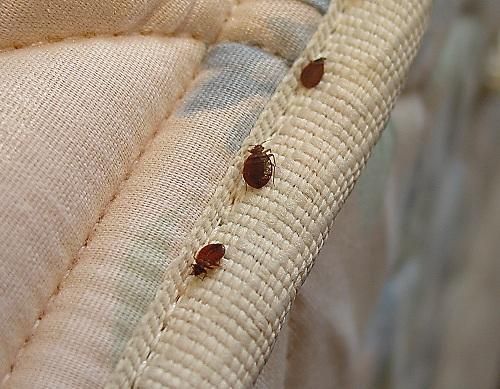Dealing with Infestations: The Advantages of Bed Bug Heat Treatment
Wiki Article
Efficient Bed Insect Treatment Solutions for Your Home
As house owners, coming across a bed bug problem can be an upsetting experience that calls for punctual and effective activity - bed bug heat treatment. From determining the initial signs of a problem to determining one of the most ideal treatment techniques, the process of removing bed bugs needs focus to information and a tactical technique. In this conversation, we will check out a variety of proven solutions that can aid you resolve and eliminate bed bugs from your home, supplying you assurance and guaranteeing a comfy living environmentRecognizing the Bed Pest Invasion

Another sign of bed pests is the existence of dark fecal spots on bed linens, furnishings, or wall surfaces. These spots are commonly small and may bleed into the material, looking like ink discolorations. Musty smells in ravaged areas can also suggest bed bugs, as their scent glands produce a distinctive mildewy smell.
In some cases, individuals might likewise notice little bloodstains on sheets or jammies, arising from unintentionally crushing bed pests while sleeping. Appropriate identification of these vital indicators is important for establishing the presence of bed bugs and launching appropriate therapy actions promptly.
Non-Chemical Therapy Techniques
Upon identifying the existence of bed insects with key indications such as bites, fecal places, and musty smells, exploring non-chemical treatment methods ends up being critical in properly resolving the invasion. Non-chemical methods provide an option for people looking for environmentally friendly remedies or those with sensitivities to standard pesticides.Among one of the most reliable non-chemical approaches is warm treatment. Subjecting the plagued locations to heats can get rid of bed bugs in all life stages, consisting of eggs. This approach is safe and penetrates into crevices where bed bugs hide. One more non-chemical option is vacuuming. Completely vacuuming plagued surfaces, seams, and crevices can literally get rid of bed bugs and their eggs. Bear in mind to immediately deal with the vacuum bag in a secured plastic bag outside the home.
In addition, encasing cushions, box springs, and pillows in special bed bug-proof covers can help catch any bed insects inside and avoid them from feeding or running away. In addition, heavy steam therapy can be used to kill bed pests on surface areas and in fabrics by exposing them to heats. Integrating these non-chemical approaches right into an extensive therapy strategy can considerably enhance the performance of combating bed bug invasions.
Chemical Treatment Alternatives
Chemical treatment choices are frequently used in the extermination of bed insects to effectively eliminate invasions. One of the most frequently utilized chemicals in bed bug treatments is pyrethroids, which work by disrupting the bed insects' worried system, ultimately leading to their fatality.An additional efficient chemical treatment is neonicotinoids, which additionally target the worried system of bed pests yet have shown to be extra potent and have a longer residual impact compared to pyrethroids. Desiccants, such as diatomaceous earth, are one more chemical treatment option. These compounds function by absorbing the waxy external layer of the bed bugs, triggering them to dehydrate and die.
While chemical therapies can be very effective in removing bed pest invasions, it is vital to adhere to safety guidelines and guidelines supplied by experts to lessen any type of potential dangers to humans and animals. - exterminator DC
Laundering and Vacuuming Approaches
Along with chemical therapy options, efficient bed insect management also involves executing detailed laundering and vacuuming techniques. Laundering infested things in hot water and drying them above warmth can help get rid of bed bugs and their eggs. It is vital to clean and completely dry bedding, apparel, curtains, and any other material items that might have entered call with bed bugs.Vacuuming is one more vital technique in combating bed insect infestations. Utilizing a vacuum with a solid suction power, thoroughly vacuum locations where bed bugs might hide, such as bed mattress, box springs, bed structures, and carpets. Remember to get rid of the vacuum cleaner bag in a secured plastic bag instantly after vacuuming to avoid bed pests from running away.
Frequently vacuuming and washing products can substantially lower the bed bug populace in your house and complement the efficiency of chemical Bed bug treatment therapies. By incorporating these laundering and vacuuming techniques right into your bed insect administration plan, you can boost the possibility of removing these parasites from your space.

Stopping Future Problems
Regularly inspect and vacuum locations where bed bugs are known to conceal, such as along bed mattress seams, bed structures, and furnishings joints. Be vigilant when bringing used furniture or apparel right into your home, as these products can occasionally be sources of bed bug invasions. By carrying out these preventative steps, you can protect your home versus future bed pest infestations.
Verdict
Finally, efficient bed insect treatment solutions for your home include determining the invasion, using non-chemical and chemical treatment techniques, laundering and vacuuming approaches, and carrying out precautionary steps. By complying with these actions, you can successfully eliminate bed bugs from your home and protect against future problems. It is essential to attend to the problem quickly and thoroughly to make certain a bed bug-free living environment.Report this wiki page